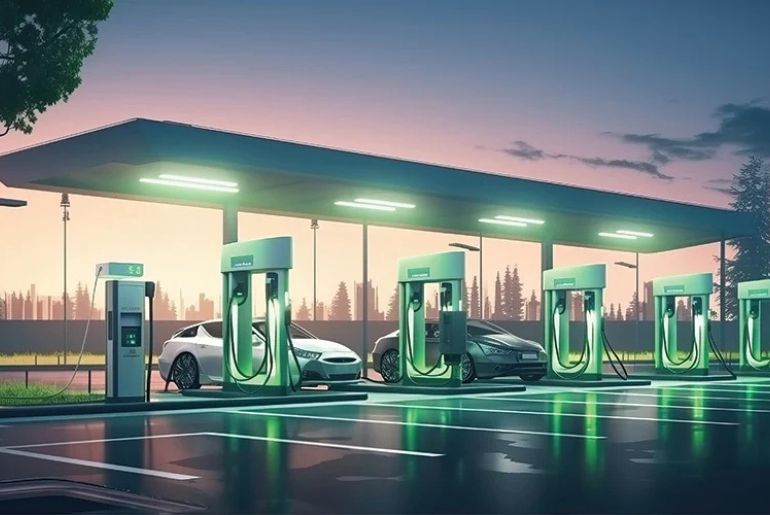India’s electric vehicle market is taking off at a flying pace in 2025. New insights from the HERE-SBD EV Index points to strong consumer interest in EVs around the country, but public charging infrastructure is struggling to keep up.
Some states are setting the example:
- Chandigarh maintained the top spot because of good support for EV policies and the increase in the share of EV fleets.
- Karnataka also jumped to the number two spot in the ranking with high number of chargers per vehicle even though the absolute numbers of chargers declined slightly.
- Goa is at the top in terms of EV fleet share at 0.91%
- Delhi has excellent charger density, with one public charger approximately every 9 km.
- While Tamil Nadu improves to fifth place, reflecting steady EV growth.
At the other end of the spectrum, there are states that are still falling behind.
EV and charger scores are lowest for Arunachal Pradesh, J&K, Bihar, Assam and Jharkhand, which points to uneven adoption across India.
What’s happening on the ground:
- India has installed a total of 6800 new public chargers between 2024 to 2025.
- Average charger power remains 33 kW, which is not enough for fast charging.
- The ratio of EVs to chargers climbing from 12:1 to 20:1 (more vehicles/available chargers).
- Consumers quite often experience faulty chargers, with 73% reporting failed charging attempts.
Even though infrastructure is expanding, it is not evolving fast enough to match the rapid growth of EVs in India. The conclusion of the FAME II program in September 2024 shifted policy focus. PM E-DRIVE now leads the push, focusing on electrification of 2- and 3-wheelers as well as commercial vehicles. Four-wheelers continue to benefit from sales tax deductions and the Production Linked Incentive (PLI) scheme, which encourages domestic manufacturing of zero-emission vehicles.
Survey Insights:
To compile the study’s consumer sentiment data, SBD surveyed over 1,000 drivers online across India during July and August 2025.
- Most EV owners are young, around 35, and city dwellers.
- Key reasons to go electric: low running costs, environmental benefits, better performance, and advanced tech.
- Almost half believe ICE vehicles will retire by 2030.
- 90% are confident India can develop the needed infrastructure.
- 47% cited lack of public chargers as the main adoption barrier; 36% want more charging stations.
Challenges ahead:
- Public charging stations need to expand faster.
- Different vehicle types (2/3-wheelers vs. cars) require different solutions.
- Policymakers and industry must invest smartly to meet growing demand.
Experts weigh in on India’s EV landscape:
Abhijit Sengupta, Senior Director and Head of Business for HERE’s India and Southeast Asian business said,
“India’s EV journey is accelerating, propelled by rising consumer interest and progressive state-level policies. As adoption surges, the strain on infrastructure becomes more evident. The 2025 HERE-SBD EV Index highlights both the promise and pressure points of India’s EV ecosystem. These insights can serve as a valuable guide for policymakers and industry leaders to align efforts, close infrastructure gaps, and build a more inclusive and sustainable mobility future for the country.”
Robert Fisher, Senior Consulting Manager at SBD Automotive, said,
“India’s transport sector stands on the cusp of rapid electrification, yet the challenges ahead are considerable,”
“The nation must navigate the distinct requirements of its diverse mobility landscape, as the needs of two- and three-wheeler drivers differ greatly from those of car owners and public transport operators. Only through rigorous analysis of market dynamics, user sentiment, and charging infrastructure development can India create an electrification strategy that meets the needs of its increasingly mobile population.”
On paper, India’s EV story seems a promising one. People are want to switch; policies are improving; and the market is maturing. But without a sufficient number of chargers, and improved infrastructure, adoption may slow down. Coordinated efforts amongst states, companies and policymakers will be required to keep the momentum alive. EV adoption is for real. India is poised to take off, but the path ahead needs support.

